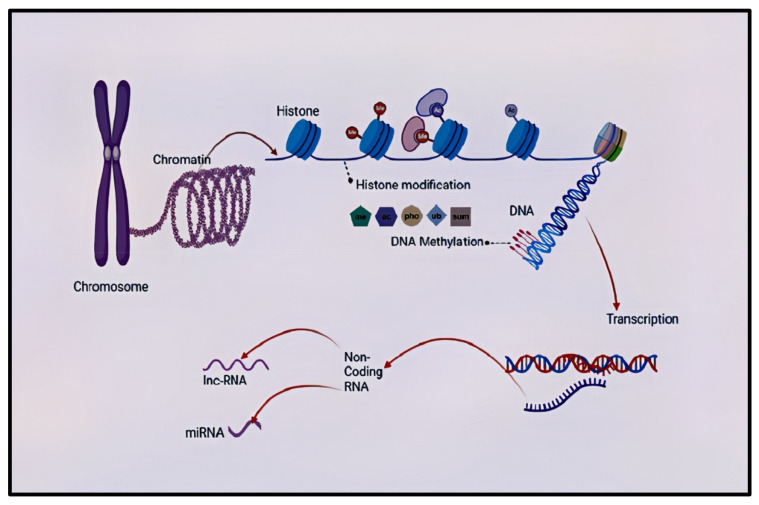Figure 1.
Summary of epigenetic processes that can occur in the mammalian central nervous system. The DNA–protein complex in chromosomes is called a chromatin, who’s functional is a nucleosome (not shown). There is the transcriptionally accessible (found in loosely coiled chromatins) and inaccessible (found in tightly coiled chromatins) DNA. DNA interacts with the N terminal tails of the histone and this gives sites for histone modifications. Histone modification process is a covalent post-translational modification of the histone proteins, and it includes histone methylation (me), acetylation (ac), phosphorylation (pho), ubiquitination (ub), and SUMOylation (sum). Another level of epigenetic regulation is non-coding RNA. DNA methylation occurs when the methyl groups attach covalently to the cyto-sine-guanine dyads (CpG) dinucleotide and non-CpG regions of the DNA. The transcription process makes an RNA copy like mRNA (not shown) from the DNA sequence. Non-coding RNAs can be categorised into long non-coding RNAs and small non-coding RNAs (micro-RNAs). They are involved in chromatin and nuclear remodelling, gene transcription, translational repression, and degradation of messenger RNAs. DNA—deoxyribonucleic acid, RNA—ribonucleic acid, me—methylation, ac—acetylation, pho—phosphorylation, ub—ubiquitination, sum—SUMOylation, miRNA—micro RNA, lnc-RNA—long non-coding RNA.

